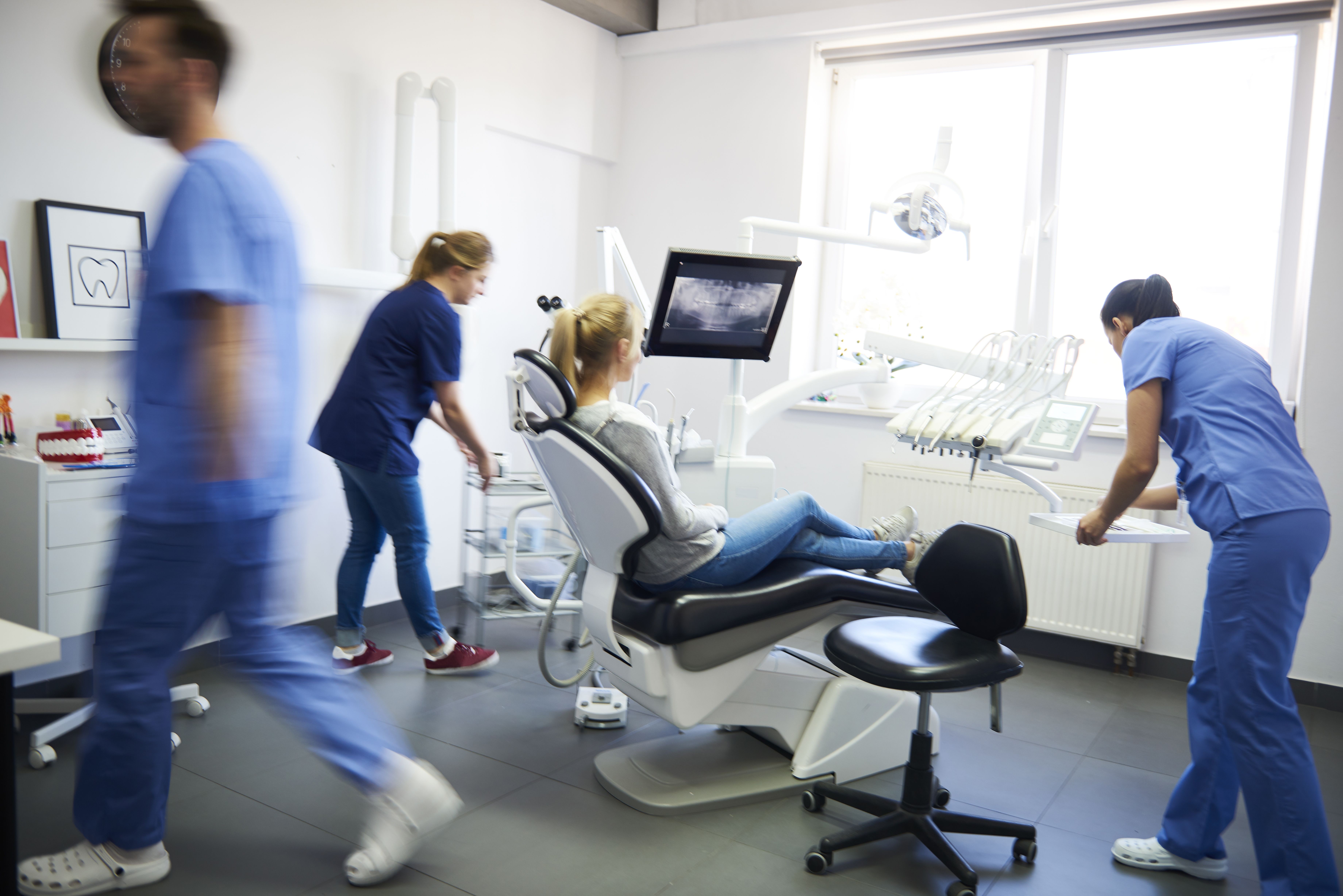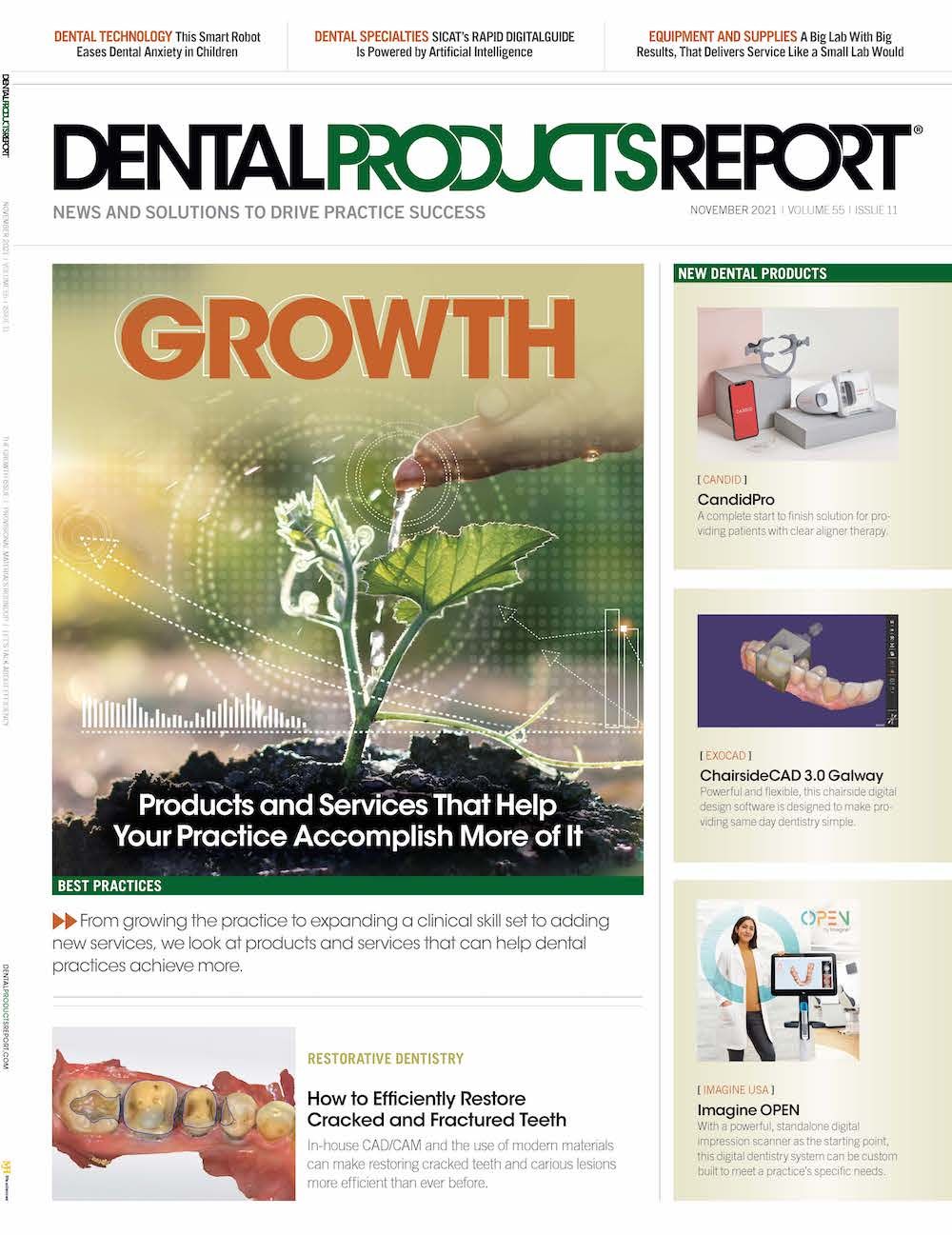Let’s Talk About Efficiency
How technology can add efficiency, not just for the clinician but for the whole team.

At a certain point in my life, I loved technology for technology’s sake. I had always been a tinkerer and a hacker—even in my early years.
When technology first began to enter the realm of health care, I was thrilled with it simply because it was tech. The early devices were stand-alone and frequently on carts. This meant when you wanted to use an intraoral camera, your assistant had to find the cart. Once it was rolled in, powered on, you could then show a patient their teeth.
Thank goodness those days are behind us. Now if you want to show a picture to your patient, you open the intraoral camera in your software and within seconds you are taking photos and educating your patient. Let’s look at a few ways you can use the amazing high-tech devices that are available to increase your efficiency.
I love efficiency because it makes things faster, easier, and less stressful for everyone involved. It’s great for patients because no one wants a dental appointment to take longer.
Efficiency is also great for the doctor and the team. For the team, it means not having to run behind with all the built-up stress. It allows them to do things like setting up for the next patient in the perfect manner. For the doctor, it means less stress, more focus on perfect procedures, and perhaps most importantly, less time in what I refer to as the clinical posture.
Around 65% of doctors who are forced to retire because of a disability do so because of neck and back injuries. The less time we spend in the clinical posture, the less damage we inflict on ourselves. That means efficiency can extend your career.
Digital Treatment Planning and Surgical Guides
Implant surgery can be stressful and time-consuming. Using surgical placement guides during these procedures is a great way to decrease stress as well as making the procedure itself faster.
Programs that 3D render your CBCT also allow you to do a “drag and drop” virtual implant placement. Instead of leaning over the patient, you design the case in the comfort of your computer chair. This renders in a way that lets you see exactly how the implant will appear before surgery.
Once you have the case treatment planned and designed the way you want it, you can send the files to a lab that will create a custom surgical guide that allows you to totally replicate what you created in the software. The other option is to design and create the custom surgical guide yourself. There are lots of products that allow you to do this. Once the guide is designed, it can then be either milled or 3D printed.
Surgical guides greatly simplify the implant placement surgery.
Digital Impressions
Using a digital scanner/acquisition device is one of the best ways to increase office efficiency. A preparation can be scanned in less time than it takes for impression material to set. Plus, if you need to refine the prep after scanning, you can simply rescan the area in question, which takes seconds.
Digital prosthetics fit better and have better occlusion, meaning that seating appointments take much less time. Frequently, a seating appointment is as follows: remove temporary, try-in restoration, check margins, check contacts, have patient close onto restoration, then cement restoration.
The latest scanners also check occlusion and offer guidance on the angle of scanning, and some (such as my new iTero Element 5D Plus) even offer caries detection. Many also offer a “time-lapse” function that allows the user to show how a patient’s teeth and occlusion have changed by comparing scans taken over time. Remember all these functions are accomplished during 1 scan. You are getting more bang for the scan than just something that is used to fabricate a crown.
Bulk Fill Composites and Curing
More and more companies are introducing bulk fill composites. Most of them are offering depths of cure 4 mm to 5 mm. Research has shown that around 80% of 2-surface posterior restorations are 5 mm or less in depth, which puts them into the sweet spot of these bulk fill materials.
When first introduced, bulk fill materials were frequently too translucent, but recent progress has allowed for the creation of highly esthetic materials that have an improved depth of cure. VOCO’s VisCalor Bulk offers the benefits of bulk fill while being one of the most esthetic materials I have ever used.
Pairing a great bulk fill material with a powerful curing light means better curing, as stronger lights penetrate farther into the restorative material. When testing in the lab, a composite company will usually use a light that is “average.” If the material is well cured when using average light, it will be better cured when polymerized with a powerful light.
Two lights that are currently in my bag of tricks are AMD’s Monet curing laser and Vista-Apex’s PinkWave. The Monet has an incredibly intense beam. In my testing, it cures composite at 39 inches in from the target. AMD’s in-house testing shows at least a 4-mm depth of cure with a 1-second cure.
The PinkWave has 4 LEDs that produce different wavelengths (Quad Wave Technology), including infrared to warm the composite to improve the depth of cure. My bench testing shows 4 mm depth of cure and clinical usage has minimal postoperative sensitivity.
Electric Handpieces
Before I tested electric handpieces, I was a doubter. However, once I used them clinically, I could not believe I ever practiced without them. They are a great example of what efficiency means to me. Sure, they don’t stall and could allow me to prep much faster if I wanted to, but what I truly love is the control they give me. Because of that control, I can be more precise in what I do. My margins are sharper and smoother. By dialing the speed down, then carefully refining my prosthetic margins, I give my patients better results and I spend less time doing it. My Bien-Air iOptima handpiece system is something I count on every day. The results are predictable, and repairs are few and far between.
Diode Lasers
If I owned a company that made a digital impression device, I would offer a promotion with a diode laser company. I would come up with an offer that would be something akin to “buy this digital impression scanner and get a free diode laser,” or something similar. The reason? Simply put, diode lasers make troughing for crown margins simple, predictable, and quick, and they make the scanning process fast and easy.
Having a clean and clear trough to expose any part of the margin that is subgingival is critical to the long-term success of the restoration. Retraction cord works and can work well. However, it is technique-sensitive and, most importantly, slow. I can trough a margin with a laser in about a minute or so, then scan the preparation. For situations where there are multiple units or fillings to do in addition to a crown prep, retraction from cord placement lasts only a few minutes, then must be repeated—not so with laser troughing.
Wrapping Up
These are just a few sprinklings of the many ways the technology we can use every day can make a huge difference in what we do. Being able to do more in less time can do a lot of things for your practice. It can allow you to spend more time educating, focusing on your margins, or even the treatment plan.
I always laugh at salespeople who tell us that if we buy something that saves 5 minutes a day, in 12 days it has saved us an hour. It’s not like we can bank all those 5 minutes, then cash them in for an hour. Yet there are times where if I was done 5 minutes earlier, I could be much more efficient. Many days, those little pieces of time do make a difference. That is just one benefit that technology brings us
